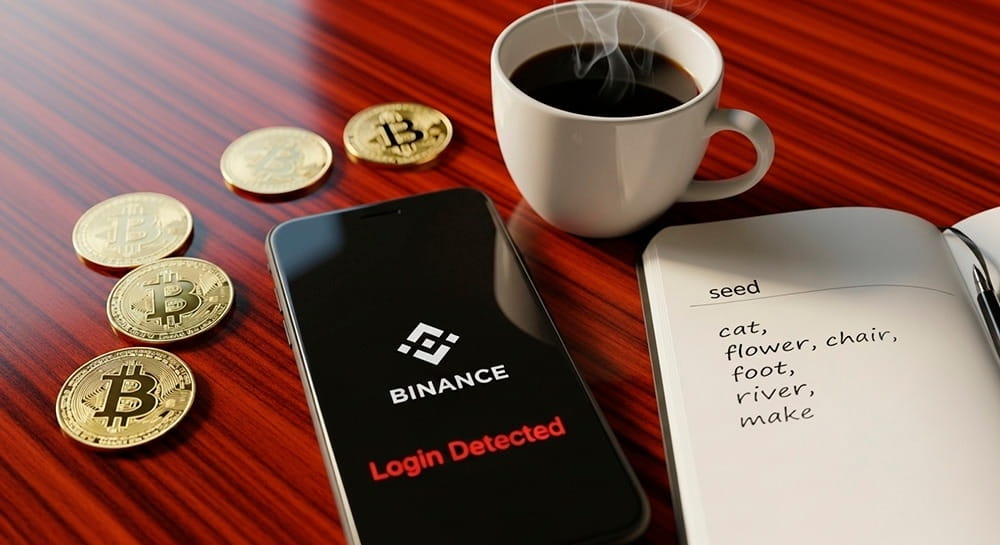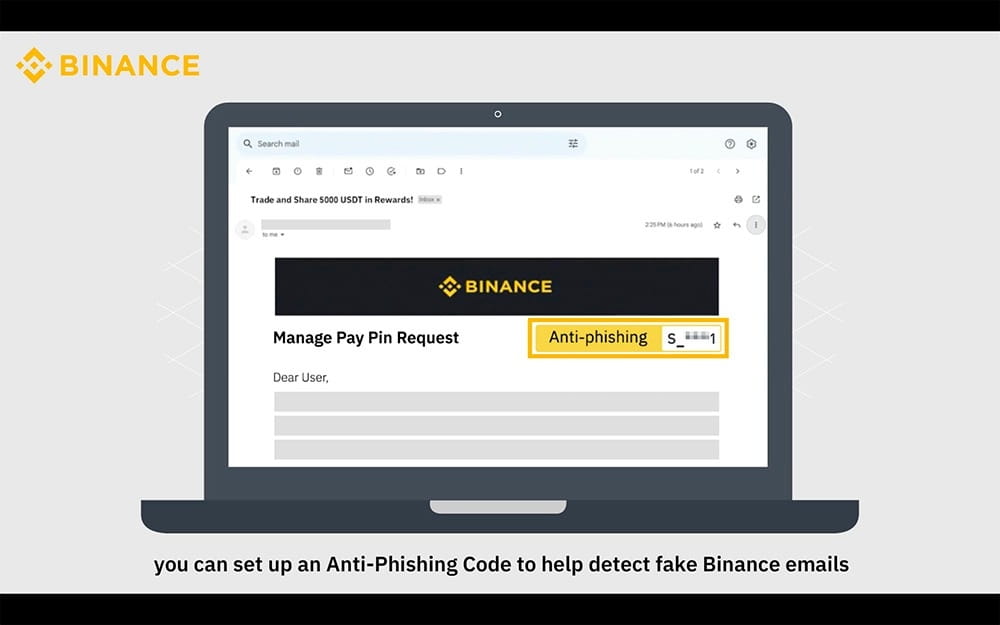It is 10:00 PM when the SMS arrives. You see the sender: Binance, and the content sounds alarming: A login attempt has been detected... If it wasn't you, call the number... You call – and you've just fallen into the scammers' trap.

🔥Binance account with a lifetime 20% discount on fees! Check it out!🔥
📱 Spoofing mechanism: SMS from "Binance"
This is not a primitive phishing attempt that can be recognized by a typo in the domain. It is a precisely designed trap that exploits the weaknesses of global telecommunications. And also the weakest element of any security system – You.
Attacks on Binance users are cunning, as criminals use spoofing methods. This allows a fake message to appear in the same SMS thread as the authentic verification codes sent by the exchange. This creates a false sense of trust.
The content of the message is meant to incite panic. It warns of the alleged addition of a new device, suspicious activity, or logging in from an exotic country. The phrase 'Is it not you?' or a threat of account blockage usually appears.
This happened to me too. I have years of experience in crypto, but my first instinct was to call back when I received such an SMS. Fortunately, the number was busy (probably another victim was calling). After a moment, I started to analyze the situation and think rationally, but who knows - maybe I would have initially fallen for it too... Emotions really control us.
The victim is urged to call back the provided number immediately, instead of traditionally clicking on a malicious link. This method bypasses anti-phishing filters. After calling back, they reach a 'consultant' who uses classic social engineering: time pressure and the promise of help. The fake advisor, after alleged verification, instructs the victim on how to transfer funds to a 'safe wallet.'
Since it's hard to convince someone to transfer funds to someone else's account, thieves instead give victims a seed phrase for a wallet they control. By using it, the victim is supposed to create a new wallet and transfer funds there. And because the seed gives access to it, the criminals quickly empty it.
❓ How is this possible?!
Why does this work, given that exchanges like Binance spend billions on security? The answer is simple: the problem lies outside of them, in the telecommunications architecture. Spoofing the sender (SMS spoofing) is possible due to vulnerabilities in the SS7 (Signaling System No.7) protocol. Operators often do not verify whether the sender of the SMS is authorized to use a name like 'Binance.' As a result, the recipient's phone automatically groups the fake message in the same thread as the real communications.
Worse still, these attacks are precisely targeted, and their probable sources are data leaks. Hundreds of thousands of records with Binance and other exchange user data were offered for sale on the Dark Web.
Although Poland has already introduced regulations to block spoofing, we can still receive false SMS messages. Therefore, we must rely on self-defense.
🛡️ Helpful technology: anti-phishing code

In response to attacks, Binance expanded its Anti-Phishing Code feature, previously available in emails, also to SMS messages.
This is a unique identifier defined by you (e.g., 'CryptoJan23'). You must set it yourself in the Security section of your Binance account. From that moment on, every authentic SMS or email from Binance will contain it.
If it is not present in the message - it is almost certainly a scam (we leave 1% uncertainty for error). You can verify this by logging into the official website and checking your inbox.
🧠 Common sense saves you from SMS scams
Technology helps, but the best defense is your awareness. You must implement the principle of zero trust:
Binance NEVER calls you asking for your seed, private keys, 2FA codes, nor will it ask you to transfer funds.
Verify any alarming messages ONLY through the official mobile app or website. Enter the address manually or use a saved bookmark; do not click on links.
Scammers exploit panic and time pressure. If the message is alarming, urgent, and threatens the loss of funds - smile and ignore the message. I know, it's difficult.
Be sure to familiarize yourself with the security guidelines recommended by Binance.
🚨 What to do if you have fallen victim?
If we have already been deceived, we need to act.
Contact Binance support via the official chat or website, reporting the incident and requesting a temporary freeze of your account.
You can trace any flow of funds using tools like BSCScan. Identifying target wallets can help in later stages.
It is necessary to report to the police and CERT Polska. Thanks to the formal report, law enforcement can issue a request to any exchange to freeze funds if they have gone there.
You must, however, take into account that if you have already transferred your cryptocurrencies or revealed your passwords, you will most likely not recover them.
In a world where telecommunications infrastructure is outdated, and user data can be found on the Dark Web, you must be prepared for attacks. The greatest advantage comes not from sophisticated techniques, but from common sense. Ignore suspicious messages, and your funds will remain where they belong.


